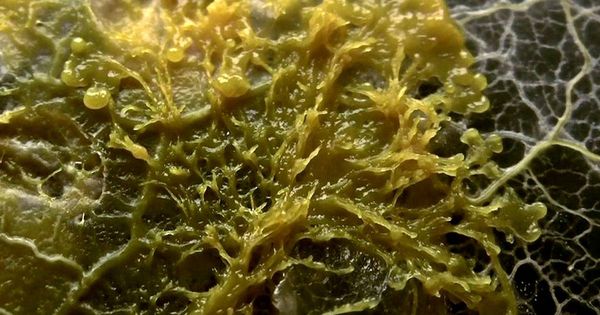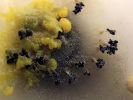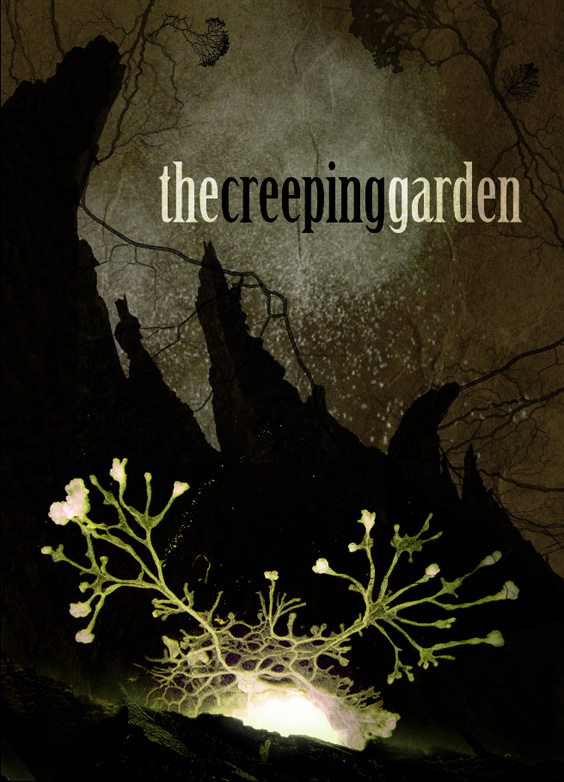Eye For Film >> Movies >> The Creeping Garden (2014) Film Review
The Creeping Garden
Reviewed by: Jennie Kermode

There’s no middle ground when it comes to slime moulds. You’re either at a loss to comprehend the appeals of something slippery, squelchy and fungus-like, or it’s love at first sight. This film, naturally, is primarily aimed at the latter group of people, but it also endeavours to provide an introduction for people who know next to nothing about them and can as yet only guess which way their hearts will direct them.
What are these life forms, exactly? They used to be thought of as fungi. Now they’re classified as mycetozoa, which loosely translates as ‘fungus animals’ and belong to the larger category of amoebae. The film doesn’t go into this in detail, which is fair, because their taxonomy has been altered in the past and may well be again in the future. Instead it focus on explaining – and illustrating – how they are constituted and how they behave. Beautiful magnified, time-lapse photography shows them inching along, spreading out, exploring mazes, breaking down pieces of food. One enthusiast, who loves to observes them in the wild, speaks casually of the vital role which they must play in the ecosystem. A scientist says that as far as anyone knows they don’t do anything useful at all, but that doesn’t make them any less fascinating.

They fascinate scientists from many different backgrounds. This documentary explores their way that cartographers are attracted to their ability to identify ideal routes through complex terrain, and at the inspiration which they provide to computer engineers experimenting with different ways of developing learning algorithms. We observe how experiments with them can be carried out, learning, in the process, how to care for them in artificial environments. We dig into archives full of tissue samples and spores collected decades ago. Some are more than a hundred years old. That’s no guarantee that, under favourable conditions, they won’t come back to life.
Slime mould fans will be a little disappointed that we don’t stay with them for the whole of the running time. This film is itself inclined to meander, exploring a variety of tangential paths, not all of which are fruitful. There’s is some intriguing material about the history of science here, however. In particular, it celebrates the amateur scientist – from a time when the word still held the meaning conferred by its root, referring to people who did what they did out of love rather than implying any kind of inadequacy. There has never been much money in slime moulds, so most early work on them was done for love rather than money. In the process, these scientists developed their own equipment and techniques, some of which went on to be incredibly important in other areas.
Related to this, there is material focused on the relationship between slime moulds and the early history of cinema. Before moving pictures, crowds would gather in theatres to view projections of photos and slides. We see how an insect moving around inside a hollow slide could create a sensation for viewers with no experience of seeing anything smaller than what their own eyes could focus on. We learn how slowed down or ‘time magnified’ photography duly brought moving slime moulds to the screen, giving people an insight into the world all around them which they had never before perceived.
Out in the wilds, in a little patch of forest, we see slime moulds in their natural habitat, unmolested, though photographed and tracked to record their behaviour. Bright splotches of yellow, they’re easy to spot, yet seem to have no predators. Their slow pace and persistence make them seem almost as if they inhabit a parallel dimension, barely concerned by our world. They are patient and adaptable with a simple intelligence quite different from our own. The chances are that they will outlast us. They even composed some of the music for this film. Though it’s a little disorganised and tonally inconsistent, this documentary is nonetheless a good way to get to know them better.
Reviewed on: 21 Apr 2023

















